Elephants are fascinating creatures. Being the largest of all land mammals on Earth, many aspects of their huge anatomy are a source of amazement themselves, whilst their high level of social development makes them an intriguing subject for observation. Furthermore, we are increasingly learning that they play a vital role in the natural environment, and in maintaining the balance of fragile ecosystems. Unfortunately however, decades of negative interactions with humans have reduced the numbers of these gentle giants significantly. Read on to learn more about these incredible creatures, and what you can do to help protect and conserve their populations.
Before we begin however, it may be important to clear up the all important question of how many species of elephant are there? Quite simply, there are two distinct species: the African elephant and the Asian elephant. Over many years however, there have been debates about how many types of elephants are there – and the general consensus is that there are two further subspecies of the African elephant. These are forest elephants and savannah elephants.
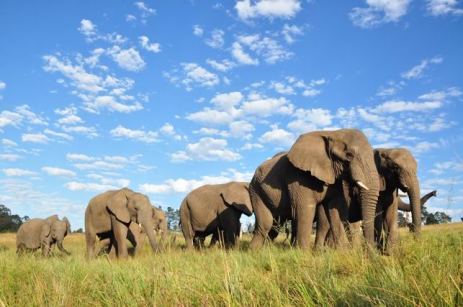
10 interesting facts about the anatomy of elephants:
- Asian elephants are slightly smaller than their African counterparts, and have proportionally smaller ears. Their skin is normally dark grey or brown, but they often have pink or yellow marks on their face, ears and trunk.
- The African elephant has the largest brain in the animal kingdom – it can weight up to 5kg! This is amazing when you consider how much does an elephant weigh (Asian elephants weigh about 5400kg, and African elephants up to 6000kg!). The human brain, however, is larger when measured as a proportion of our total body weight.
- The average life span of an elephant is 50-70 years, but the oldest known elephant in the world was 86 when he died.
- Elephants walk at about 4mph, and they are able to swim long distances. They are, however, the only mammal which can’t jump. How fast can elephants run? Elephants have been clocked to run at 15 mph, however it is believed that, over a very short sharp distance, elephants could run as fast as 25mph.
- Adult elephants spend about 16 hours a day eating – they require up to 300kg of food and 160 litres of water each day.
- Elephants have 6 sets of molar teeth, upon which they depend for survival. When the last set is lost, the animal is unable to eat and eventually dies of starvation.
- An elephant’s trunk is a very impressive multi-tool. Besides being a long nose used for smelling, breathing and trumpeting, it is also used as a hand to grab things – it is sensitive enough to pick up a blade of grass, and strong enough to rip the branches off a tree. The trunk is also used as a huge straw – elephants can suck up to 14 litres of water a time into their trunks and then blow this water into their mouths to drink. When bathing, they also use their trunk to spray themselves with water and mud. A great pub quiz question is how many muscles in an elephant’s trunk? Amazingly the answer is 40,000!
- Elephants have very sensitive skin and use mud as a form of sunscreen. They need to take regular mud baths in order to protect themselves from sunburn, insect bites and moisture loss.
- Elephant feet are covered in a soft padding that helps to support their weight, as well as preventing them from slipping and dulling the sound of their footsteps. As a result, elephants can walk almost silently, despite their huge weight. Furthermore, elephants use their feet to listen to the sub-sonic rumblings made by other elephants through vibrations in the ground. They have been observed to listen by putting their trunks on the ground and carefully positioning their feet.
- Female elephants remain pregnant for 2 years – the longest gestation period of all mammals. Having a baby elephant is no small commitment either. You may ask how much does an elephant weigh at birth, and the answer is a staggering 120kg!

10 interesting facts about elephant senses and social behaviour:
- Elephants have small eyes and poor eyesight, but they make up for this with their amazing sense of smell – the best in the whole animal kingdom! An elephant can smell water from up to 12 miles away.
- Elephants communicate with one another using sound, touch and scent. Their hearing is excellent (they can hear a trumpeting call from up to 5 miles away), and they use a wide range of sounds to talk to each other – including those which humans are not able to hear.
- Elephants are highly sensitive and caring animals, and have been observed to express grief, compassion, altruism and play. They perform greeting ceremonies when a friend that has been away for some time returns to the group, and they sometimes ‘hug’ by wrapping their trunks together. Elephants will pay respect to the bones of their dead by gently touching the skulls and tusks with their trunks and feet.
- Elephants are able to recognise themselves using mirrors. Such displays of self-recognition indicates a very high level of awareness, and is something which only humans, apes, cetaceans and magpies are otherwise known to do.
- Being extremely sensitive creatures, elephants have been known to display behaviour patterns similar to post-traumatic stress disorder and depression.
- Female elephants spend their whole lives living in tight family groups with their female relatives. The eldest female normally leads the group.
- Male elephants leave the herd between the ages of 12 and 15, and usually live alone (although may sometimes form small groups with other males).
- Elephants are extremely intelligent animals and have excellent memories. Matriarchs rely on this memory during dry seasons when they need to guide their herds, sometimes for tens of miles, to watering holes that they remember from the past.
- Elephants are able to recognise and distinguish human voices. They can tell the difference between human languages, male and female voices, friendly voices and those associated with danger.
- Unlike stories suggest, elephants are not afraid of mice. They are however, terrified of bees and ants, so some African farmers protect their fields from elephant damage by lining the borders with beehives.
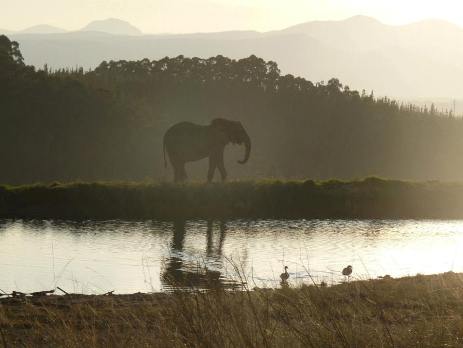
The important role of elephants in the natural environment:
As well as having a fascinating anatomy and behaviour characteristics, elephants also play an essential role in delicate African and Asian ecosystems. Their huge size means that they can shape the landscape that they are in – as they move around and feed, they create clearings in wooded areas, which lets light in so that new plants can grow and smaller animals can survive. They are also a very important form of seed dispersal; elephant dung often contains undigested seeds which are then spread widely around the area as the animals travel – sometimes these seeds are too big for smaller animals to eat, making elephants a vital carrier for these plants. Elephant dung is also an important resource for humans – their nutrient-rich manure replenishes depleted soils so that humans can have a nutrient rich soil to plant crops in.
Elephants are important for other animals within the environment too. They dig waterholes when river beds are dry that other animals can use as a water source, and their large footprints can create deep holes for water to collect in. The wide trails that they carve through the vegetation as they move through the landscape can also act as fire breakers and water run-offs, and make it easier for humans and other animals to access the forest and brush.
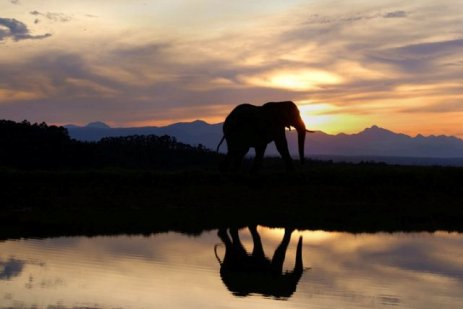
Challenges affecting elephant populations:
Sadly, elephant populations in both Africa and Asia are being threatened by negative interactions with humans. The word ‘elephant’ comes from the Greek word ‘elephas’ which means ivory, and unfortunately it has been the ivory trade which has caused about 90% of African elephants to be wiped out in the past century. Despite being illegal, elephant poaching has been getting dramatically worse in parts of Africa in the last 10 years, mainly because of growing demand for ivory in China and the Far East. It is thought that around 20,000 African elephants are killed every year for their ivory. Elephants rely on their tusks for survival. How do elephants use their tusks, you might ask? These desirable commodities are essential to the elephants for defense, offense, digging, feeding, lifting, gathering food and stripping back bark from trees – they cannot survive without them. The illegal wildlife trade also threatens to the Asian elephant population. As well as for ivory, elephants are also killed for their meat, skin and tail hair. It is estimated that poaching for such products caused Cambodia, Laos and Vietnam to lose three quarters of their wild elephants in the late 1980s and 1990.
Habitat loss due to expanding human settlements is another challenge facing both African and Asian elephant populations. Elephants need a lot of land to find enough food and water – they can roam across more than 30,000 sq km – but as human populations grow, the amount of land available to elephants reduces. The space available to elephants in Africa has more than halved since 1979, while Asia, as the world’s most densely populated continent, has experienced some of the highest rates of deforestation and habitat destruction in recent years. As human settlements expand and we start to move into the elephants’ space, more negative interactions start to occur. Crop raiding by elephants is a particular problem in both Africa and Asia – this can result in a loss of income, food or even lives. Farmers will sometimes kill elephants to protect their family or income, further threatening the size of elephant populations. As a result of a combination of these challenges, Asian elephants are now just restricted to 15% of their original range, in a number of fragmented and isolated populations around south and south-east Asia.
What can you do to help?
Here at Oyster Worldwide, we run several elephant conservation and protection volunteer projects in both Asia and Africa, all of which seek to maintain and increase elephant populations in these areas. You can get involved in important elephant research, monitoring, education and community projects in Namibia and South Africa, or choose from volunteering at an elephant sanctuary in Thailand, or on an elephant conservation project in Thailand, Sri Lanka or Laos. Follow the links above to the relevant pages on our website to find out more about each of these extremely worthwhile projects and learn how you can get up close to these magnificent creatures and experience their intelligence for yourself.













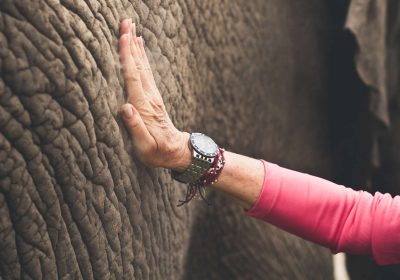


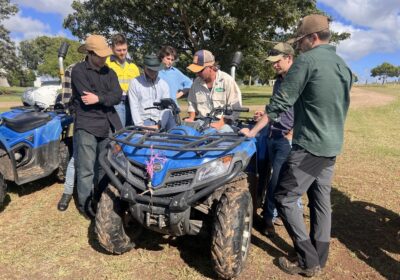

Amazing facts about elephants!
Thanks Natalia, we thought so too!
It’s amazing how they can differentiate friendly voices from dangerous ones
Thank you this info. I love elephants & found a few nuggets of new information!
Glad you found it useful!
Elephants, with their immense size and gentle nature, are symbols of wisdom and compassion. Their deep familial bonds show us the beauty of loyalty and care.